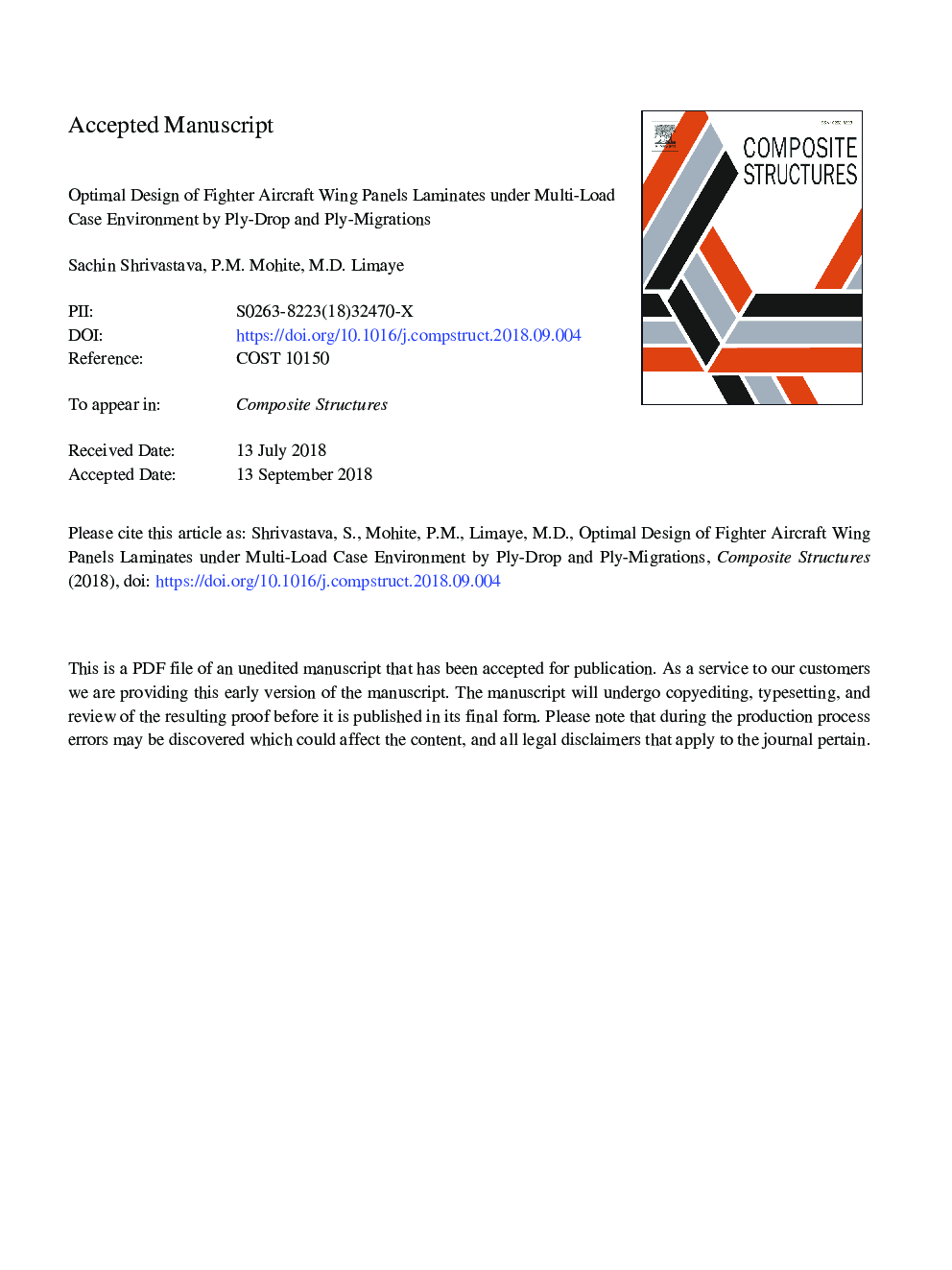| Article ID | Journal | Published Year | Pages | File Type |
|---|---|---|---|---|
| 11024320 | Composite Structures | 2019 | 20 Pages |
Abstract
The ply-drop (PD) is termination of specific plies at rib-axis for getting tapered laminates. The present optimization study aims to achieve minimum weight tapered wing panels laminates by PD followed by ply-migrations (PM). The PM are required for ply-continuity (blending) and achieving smooth external aerodynamic surface. A genetic-algorithm mutation operator and fitness based search algorithm is developed in the present study for the optimization. The laminate weight minimization has been achieved as goal of multi-objective optimization (MOO), by utilizing excess design margins of Tsai-Wu first ply failure-index (FI) and wing tip lateral deflection. The finite-element (FE) model of laminate is a set of discrete laminates (chromosomes) between ribs with continuity by virtue of ply-orientations. To select best fit laminate, ply orientations were randomly selected and perturbed for thickness during optimization. The fitness function for evaluating chromosomes is a composite function of multi-objective design requirements and design constraints. The algorithm submits orientation/thickness combinations to ABAQUS/CAE by python-script for function evaluation. The application of algorithm over an initially assumed quasi-isotropic laminate of uniform thickness showed 57% weight reduction for a fighter aircraft's wing panel. The optimization process is automated making PD practically viable in the design process itself.
Keywords
Related Topics
Physical Sciences and Engineering
Engineering
Civil and Structural Engineering
Authors
Sachin Shrivastava, P.M. Mohite, M.D. Limaye,
